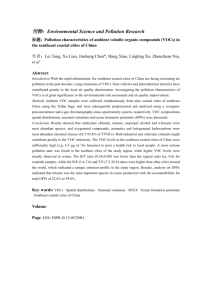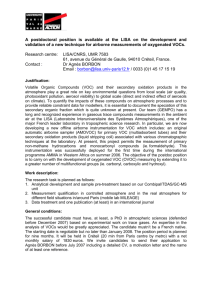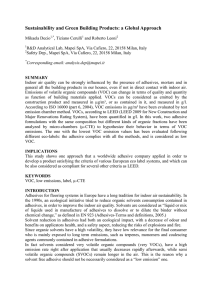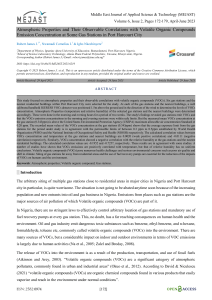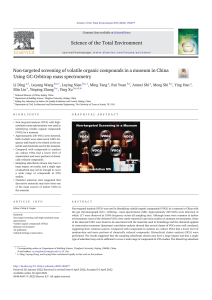PI Name: Hanseup Kim Department: Electrical Engineering Faculty
advertisement
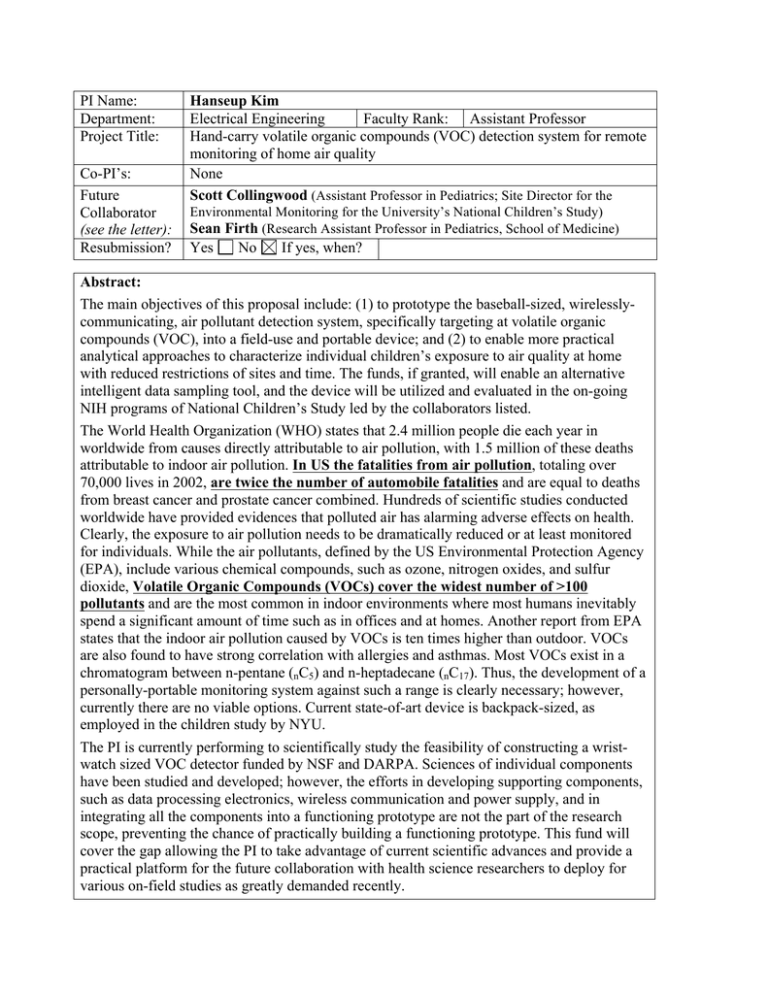
PI Name: Department: Project Title: Co-PI’s: Future Collaborator (see the letter): Resubmission? Hanseup Kim Electrical Engineering Faculty Rank: Assistant Professor Hand-carry volatile organic compounds (VOC) detection system for remote monitoring of home air quality None Scott Collingwood (Assistant Professor in Pediatrics; Site Director for the Environmental Monitoring for the University’s National Children’s Study) Sean Firth (Research Assistant Professor in Pediatrics, School of Medicine) Yes No If yes, when? Abstract: The main objectives of this proposal include: (1) to prototype the baseball-sized, wirelesslycommunicating, air pollutant detection system, specifically targeting at volatile organic compounds (VOC), into a field-use and portable device; and (2) to enable more practical analytical approaches to characterize individual children’s exposure to air quality at home with reduced restrictions of sites and time. The funds, if granted, will enable an alternative intelligent data sampling tool, and the device will be utilized and evaluated in the on-going NIH programs of National Children’s Study led by the collaborators listed. The World Health Organization (WHO) states that 2.4 million people die each year in worldwide from causes directly attributable to air pollution, with 1.5 million of these deaths attributable to indoor air pollution. In US the fatalities from air pollution, totaling over 70,000 lives in 2002, are twice the number of automobile fatalities and are equal to deaths from breast cancer and prostate cancer combined. Hundreds of scientific studies conducted worldwide have provided evidences that polluted air has alarming adverse effects on health. Clearly, the exposure to air pollution needs to be dramatically reduced or at least monitored for individuals. While the air pollutants, defined by the US Environmental Protection Agency (EPA), include various chemical compounds, such as ozone, nitrogen oxides, and sulfur dioxide, Volatile Organic Compounds (VOCs) cover the widest number of >100 pollutants and are the most common in indoor environments where most humans inevitably spend a significant amount of time such as in offices and at homes. Another report from EPA states that the indoor air pollution caused by VOCs is ten times higher than outdoor. VOCs are also found to have strong correlation with allergies and asthmas. Most VOCs exist in a chromatogram between n-pentane (nC5) and n-heptadecane (nC17). Thus, the development of a personally-portable monitoring system against such a range is clearly necessary; however, currently there are no viable options. Current state-of-art device is backpack-sized, as employed in the children study by NYU. The PI is currently performing to scientifically study the feasibility of constructing a wristwatch sized VOC detector funded by NSF and DARPA. Sciences of individual components have been studied and developed; however, the efforts in developing supporting components, such as data processing electronics, wireless communication and power supply, and in integrating all the components into a functioning prototype are not the part of the research scope, preventing the chance of practically building a functioning prototype. This fund will cover the gap allowing the PI to take advantage of current scientific advances and provide a practical platform for the future collaboration with health science researchers to deploy for various on-field studies as greatly demanded recently.
